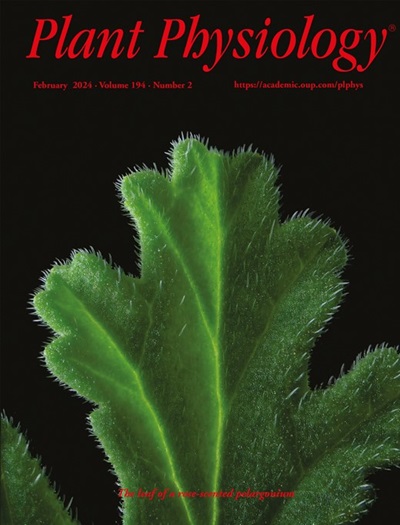Genome modification in plant mitochondria
IF 6.5
1区 生物学
Q1 PLANT SCIENCES
引用次数: 0
Abstract
Mitochondria are an indispensable component of every plant cell and are inextricably linked to many vital functions. One of their key characteristics is that they have their own genome. This genome, although greatly reduced, encodes several essential genes. While this has been known for decades, until recently it has not been possible to study the mitochondrial genome and its function in detail due to the lack of suitable tools for forward and reverse genetics. This is partly due to the low mutation rate in mitochondria and the lack of methods for direct transformation. A breakthrough came with the use of nuclear encoded transcription activator-like effector (TALE) nucleases (TALENs) for targeted mitochondrial mutagenesis. One of the first applications was to show unambiguously that certain ORFs were causal for cytoplasmic male sterility (CMS). This had previously been beyond our technical capabilities. TALENs are suitable for all plant species amenable to nuclear transformation because they are protein-only and can be imported post-transcriptionally into the mitochondria. Unfortunately, TALEN mutagenesis in plant mitochondria often seems to be associated with large genomic rearrangements. DNA base editors, the latest addition to the toolbox, bypass these side effects and merely introduce point mutations. They are based on TALEs and could only be developed after the discovery of a cytosine deaminase that acts on double-stranded DNA. The possibilities for targeted modification of the mitochondrial genome in plants are developing rapidly. This article aims to show where we stand in this development and what we can expect in the near future.植物线粒体的基因组修饰
线粒体是每个植物细胞不可缺少的组成部分,与许多重要功能密不可分。它们的一个关键特征是它们有自己的基因组。这个基因组,虽然大大减少,编码几个重要的基因。虽然这已经知道了几十年,但直到最近,由于缺乏合适的正向和反向遗传学工具,还不可能详细研究线粒体基因组及其功能。这部分是由于线粒体的突变率低,缺乏直接转化的方法。核编码转录激活因子样效应(TALE)核酸酶(TALENs)用于靶向线粒体诱变取得了突破性进展。最早的应用之一是明确地表明某些orf是细胞质雄性不育(CMS)的原因。这在以前已经超出了我们的技术能力。TALENs适用于所有适合核转化的植物物种,因为它们仅是蛋白质,可以在转录后导入线粒体。不幸的是,植物线粒体中的TALEN突变似乎经常与大的基因组重排有关。最新加入工具箱的DNA碱基编辑器绕过了这些副作用,只引入了点突变。它们是基于TALEs的,只有在发现了作用于双链DNA的胞嘧啶脱氨酶之后才能开发出来。植物线粒体基因组靶向修饰的可能性正在迅速发展。本文旨在展示我们在这一发展中所处的位置,以及我们在不久的将来可以期待什么。
本文章由计算机程序翻译,如有差异,请以英文原文为准。
求助全文
约1分钟内获得全文
求助全文
来源期刊

Plant Physiology
生物-植物科学
CiteScore
12.20
自引率
5.40%
发文量
535
审稿时长
2.3 months
期刊介绍:
Plant Physiology® is a distinguished and highly respected journal with a rich history dating back to its establishment in 1926. It stands as a leading international publication in the field of plant biology, covering a comprehensive range of topics from the molecular and structural aspects of plant life to systems biology and ecophysiology. Recognized as the most highly cited journal in plant sciences, Plant Physiology® is a testament to its commitment to excellence and the dissemination of groundbreaking research.
As the official publication of the American Society of Plant Biologists, Plant Physiology® upholds rigorous peer-review standards, ensuring that the scientific community receives the highest quality research. The journal releases 12 issues annually, providing a steady stream of new findings and insights to its readership.
 求助内容:
求助内容: 应助结果提醒方式:
应助结果提醒方式:


